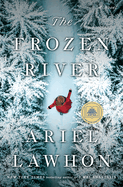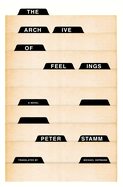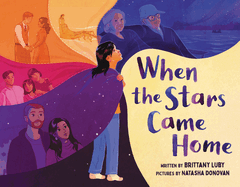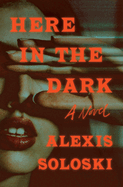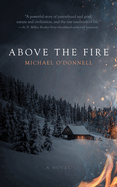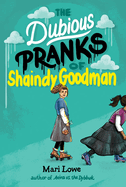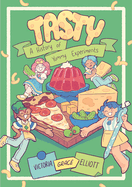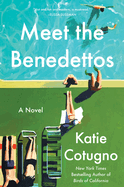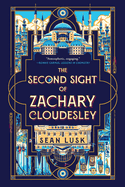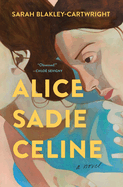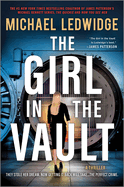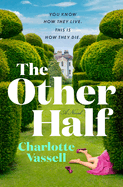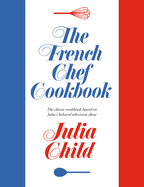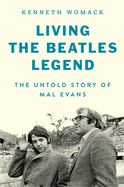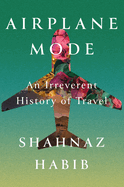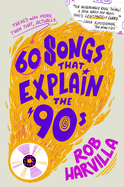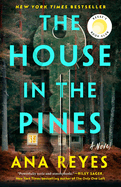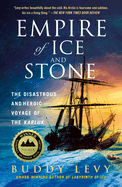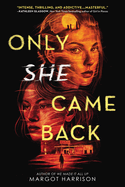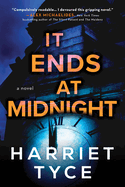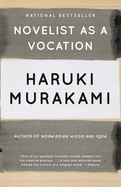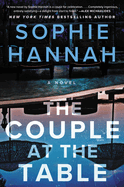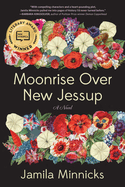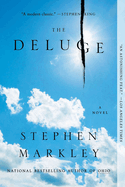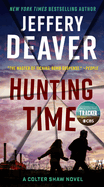Friday, December 15, 2023
We highlight some terrific fiction this week, including The Archive of Feelings, in which Swiss author Peter Stamm writes with "the seemingly effortless precision of an artist" about an archivist whose job is deemed obsolete; Ariel Lawhon's "gripping" sixth novel, The Frozen River, examines the ripple effects of a crime in 1780s Maine, inspired by the life of midwife Martha Ballard; and When the Stars Came Home, a "splendid picture book" by Brittany Luby, illus. by Natasha Donovan, features an Indigenous boy uprooted with his family who learns the true meaning of home. Plus so many more!
In The Writer's Life, reading with literary critic and scholar Nicholas Dames transforms into a kind of meta-exercise, in light of his book The Chapter.
The Frozen River
by Ariel Lawhon
Ariel Lawhon's gripping sixth novel, The Frozen River, examines the ripple effects of a crime in a small community--and paints a striking portrait of a woman devoted to healing and justice. Life is harsh in rural 1780s Maine, and midwife Martha Ballard takes seriously her duties of attending births and deaths, as well as treating her neighbors' ailments. But even she is stunned when Joshua Burgess, one of two local men accused of rape, is pulled out of the river. As she searches for Burgess's killer (and worries when her son becomes a suspect), Martha tends to her patients and her large family; fights for justice for Burgess's victim; deals with an arrogant new doctor; and writes her observations down in a daybook.
Lawhon (Code Name Hélène; Flight of Dreams) draws on the real Martha Ballard's (1735-1812) diary to construct her narrative, which contains a number of breathless twists and a large cast of hardscrabble characters. The author tenderly portrays the deep love between Martha and her husband, Ephraim, and gives readers a glimpse into their story. She also shows the growing pains of the fledgling U.S. justice system, which is often hijacked by men taking matters into their own hands. As the rape trial approaches, Martha and others must make tough decisions and keep an eye out for their own safety. Though the novel contains some difficult scenes, Martha's first-person narration is undergirded by a deep compassion. Lawhon's novel is a riveting story of small-town justice and a fitting tribute to a quiet, determined heroine. --Katie Noah Gibson, blogger at Cakes, Tea and Dreams
Discover: Ariel Lawhon's gripping sixth novel chronicles a tough winter in 1780s Maine and paints a striking portrait of a midwife devoted to justice.
The Archive of Feelings
by Peter Stamm, transl. by Michael Hofmann
Swiss writer Peter Stamm (The Sweet Indifference of the World; Agnes) is known for his ability to cut away every unnecessary phrase and still leave readers feeling awash in a kind of quiet abundance. In The Archive of Feelings, translator Michael Hofmann renders Stamm's original German with care, capturing with apparent ease the buoyant rhythm of the text and the structure's complexity.
After his boss deems obsolete his job curating and organizing news clippings, the unnamed archivist moves the entirety of the collection to his basement and attempts to continue the work independently. He recognizes that the archive "didn't pay its way. But tell me, what does? The archive not only points to the world, it is a picture of the world and a world in and of its own...." The archivist, despite his desire to create and maintain order, has entered a period of searching and uncertainty, especially as he dwells on his lifelong love of a childhood friend--Franziska, now a Swiss pop star known as Fabienne. The narrative moves seamlessly between the present and the past, tracking the years of his longing for Franziska and various other relationships along the way.
Gradually, his view of the archives changes, as does his perspective on the next phase of his life. When he unexpectedly reconnects with Franziska, everything is imbued with possibility, a familiar feeling to those who, like the archivist, have reached midlife and wondered what might come from risks newly taken. Stamm's prose is remarkable, exerting a hypnotic draw that may catch readers unaware but will surprise them with its force. --Sara Beth West, freelance reviewer and librarian
Discover: Like light shifting across a landscape, Peter Stamm's The Archive of Feelings plays with time and memory, offering an unusual look at the way changes in midlife can open onto unexpected possibilities.
Here in the Dark
by Alexis Soloski
Alexis Soloski's Here in the Dark is a thrillingly dark psychological drama, set in the least visible part of the spectacle of theater. Vivian Parry, 32-year-old theater critic for an important New York City magazine, carefully rations her vodka and sedatives to keep clear of the grasp of the "therapists I'm occasionally required to see." She holes up in her Manhattan studio apartment, writing and editing between shows. Readers quickly understand that Vivian is avoiding an unnamed trauma. In the audience--anonymous, with pen and notebook poised--is the only time she is remotely okay.
Seeking a crucial promotion, she reluctantly agrees to an interview with David Adler, an eager graduate student. From there, Vivian finds herself inexorably caught up in intrigues involving a missing person, a dead body discovered in a park, an abandoned fiancé, Russian gangsters, Internet gambling, and more. Vivian is heavily reliant on drink and pills; it would be easy to mistake her increasing sense of danger for paranoia, but readers can't deny the threats slipped under her door.
Soloski, in Vivian's clever, moody, sardonic voice, envelopes readers in details richly laden with subtext. Seasonal decorations include "cardboard Santas leering from store windows, snowflakes hung like suicides from every lamppost." Of Justine, Vivian's forceful best (and perhaps only) friend: "There are sentimental tragedies shorter than Justine's texts." Vivian's fragile reality fractures in sleek, stylish prose. Here in the Dark is a carefully wrought, slow-burning psychological thriller: as numb as Vivian keeps herself, the terror surges to a crescendo, her wits and understanding of what is real pitched against an unknown foe. --Julia Kastner, librarian and blogger at pagesofjulia
Discover: Against the backdrop of New York City's theater scene, a young woman grapples with the line between life and art in this memorable debut, lush with darkly elegant detail.
Above the Fire
by Michael O'Donnell
In his debut novel, Michael O'Donnell conjures a frighteningly plausible national emergency that leaves a father and son stranded in New Hampshire's White Mountains as winter approaches. It's a terse, well-paced story that effectively blends the elements of a classic nature adventure tale with a touching portrait of the loving relationship between a parent and child.
When Doug and his seven-year-old son, Tim, leave their Boston home for a week of late-October hiking along the Presidential Traverse--a chain of peaks that includes 6,288-foot Mount Washington--they can hardly imagine what awaits them in that rugged, beautiful territory. After a routine day on the trail, they learn of an apparent catastrophic cyberattack on U.S. infrastructure that has thrown American society into chaos and cut them off from all communications with the outside world. They find themselves in a physical confrontation against the elements and a psychological battle with isolation, and uncertainty about the crisis that may be unfolding in the cities and towns below.
O'Donnell, who practices law in the Chicago area and who has contributed reviews and essays to publications that include the Atlantic and the Wall Street Journal, draws on his own experiences hiking in this territory to provide a vivid picture of the region's breathtaking scenery and its omnipresent dangers. He favors a restrained prose style, and carefully balances his story between descriptions of the external tests facing Doug and Tim and a sensitive examination of an interpersonal relationship that is profoundly reshaped by their extended confinement. Above the Fire inevitably will evoke comparisons to Cormac McCarthy's The Road. That's heady company, but O'Donnell demonstrates impressive confidence about meeting that challenge. --Harvey Freedenberg, freelance reviewer
Discover: In a concise, fast-paced first novel, a father and his young son battle the elements during an isolated winter in New Hampshire's White Mountains.
Meet the Benedettos
by Katie Cotugno
It is a truth universally acknowledged that Jane Austen's Bennet family is both complicated and endlessly entertaining. Katie Cotugno's razor-sharp, hilarious sophomore novel for adults, Meet the Benedettos, reimagines this famous clan as a washed-up reality-TV family in suburban L.A., living in a crumbling McMansion and struggling to find their way forward. When sweet movie superhero Charlie Bingley and his friend Will Darcy, a brooding stage actor, move in down the street, things get intriguing--especially for the two eldest Benedetto sisters, Lilly and June. Cotugno (Birds of California; How to Love) gives Austen's classic a delightfully 21st-century spin, casting Caroline Bingley as Charlie's sharp-eyed sister and agent; Charlotte Lucas as a successful chef; and Mr. Collins as Lilly's insufferable cousin Colin, a screenwriter who might be as talented as he is annoying.
Narrated mostly by Lilly and Will, Cotugno's fast-paced narrative gives readers the backstory on the Benedettos' rise to fame, which started with their father's successful chain of Italian restaurants and has led them to an indeterminate end. Cotugno expertly draws the complex relationships between quick-witted Lilly and her bevy of sisters: beautiful but fragile June; wild, impressionable Olivia; talented but overlooked Kit; and mysterious middle child, Mari. The repartee between Will and Lilly, as well as Will's struggle with mental illness, is modern and highly believable, and the conclusion--though, in part, predictable--manages to be both fresh and satisfying. Fans of the Bennets' adventures and Cotugno's witty writing will find much to enjoy in the saga of the Benedettos. --Katie Noah Gibson, blogger at Cakes, Tea and Dreams
Discover: Katie Cotugno's razor-sharp sophomore adult novel reimagines Jane Austen's Bennets as a reality-TV family teetering between disaster and triumph in suburban Los Angeles.
The Second Sight of Zachary Cloudesley
by Sean Lusk
Sean Lusk's debut novel, The Second Sight of Zachary Cloudesley, is a strange, spellbinding, imaginative work of magical realism set in 1700s London and Constantinople, exploring Pinocchio-esque questions about what is real, and the many forms of love. It contains no shortage of tragedy, but always retains a charming sense of wonder.
Zachary Cloudesley's life begins with his mother's death; Abel will be a loving father, but at first the experience is clouded by grief. Abel is a clockmaker, but clocks are only the beginning of his artistry: he creates clockwork creatures, automatons that move and communicate like the real-life animals and humans they mimic. In Abel's workshop, Zachary suffers a life-changing injury, resulting in the treasured son being sent away to be raised in the safety of his eccentric great-aunt Frances's home in the country. Zachary's no-nonsense nurse, Mrs. Morley, and the staunchly feminist Frances round out an unusual family for a very unusual boy. Zachary is a genius and also knows things about the past and future that he should not be able to know. When Abel is sent away to distant Constantinople on an odd and dangerous mission, seven-year-old Zachary says, "You should not go, Papa. You know that, don't you?" Abel knows, but sail he does.
Years later, a teenaged Zachary will set out to rescue his father--believed to be long dead--from imprisonment in the Ottoman court. Readers will delight in following the devoted son as he learns about a broader world, encounters romance, and seeks family. The Second Sight of Zachary Cloudesley is enchanting. --Julia Kastner, librarian and blogger at pagesofjulia
Discover: An exceptional boy in a loving, if odd, family, surrounded by automatons, must adventure into historical Constantinople to save his father in this debut novel of love and whimsy.
Alice Sadie Celine
by Sarah Blakley-Cartwright
The complex, flawed characters and their fraught relationships with one another shine in Alice Sadie Celine by Sarah Blakley-Cartwright (Red Riding Hood). The three titular women immediately draw readers into their exquisitely messy lives.
The inciting premise kicks off with the natural tension a horror flick would envy, boldly written and not for the socially squeamish. Alice performs in a small Shakespearean production, but her best friend, Sadie, fails to attend; instead, she sends her mother, Celine, in her place. Celine becomes entranced with Alice's performance, realizing that her daughter's childhood best friend has grown into an alluring young woman.
The writing is gorgeous and avoids tipping into pretension. The characters are complicated and visceral. The ways in which the shifting perspectives illuminate each character in turn are truly transcendent, exploring the way each woman sees herself and how that differs from the distinct perceptions of the other two women. Celine comes alive on the page as confident, fiery, and even selfish, but from her own perspective readers glean moments of vulnerability and unfiltered love. "To Celine, Sadie was a person, never a child.... She knew, deep down, that Sadie was smarter than she was, born with essential seeds of intelligence one could neither earn nor buy. She would always remember when mop-headed Sadie broke away from her in a women's restroom.... 'I'm not a girl... And I'm not a boy. I'm a borl.' Celine had laughed and said that was a made-up word. Sadie had looked up with her brilliant, young eyes. 'Every word is made up at first.' "
Come for the arresting social transgression. Stay for the emotional complexity. --Carol Caley, writer
Discover: Alice Sadie Celine, an arresting and moving story of mothers, daughters, friends, and social transgressions, explores the nuanced interweaving of three women and their fraught relationships.
Mystery & Thriller
Past Lying
by Val McDermid
Val McDermid (1989; How the Dead Speak; Broken Ground) continues the gripping story of detective Karen Pirie in Past Lying, the seventh entry in the Karen Pirie mystery series, which is also a major BritBox TV show. Past Lying is set in the dark early days of the Covid pandemic, ratcheting up the tension from the get-go. It's April 2020, and Detective Chief Inspector Pirie and her team are sequestered at their Edinburgh homes, fearing the worst as the death toll rises. A source at the National Library, who spends her lockdown reading through the archive of papers donated by the estate of Jake Stein, a famous Scottish crime novelist, notices weird similarities between one of Stein's unfinished manuscripts and the disappearance of college student Lara Hardie the year before. She contacts Pirie's team, which sets them on an urgent quest to determine what's fact and what's fiction. The streets are empty and everyone is scared, but Pirie and her young sergeants are determined to question everyone who knew Lara, using Zoom and outdoor meet-ups to continue their investigation.
McDermid masterfully uses the lockdown as another character in the book, making the novel especially atmospheric. Stay-at-home orders preclude the usage of the detectives' normal strategies and nearly get Pirie and her team in trouble with the higher-ups for breaking regulations. The book-within-the-book of Stein's manuscript is fascinating, and the twists and turns the case takes will keep readers guessing until the final pages. Tartan noir at its finest, Past Lying is perfect for fans of Ian Rankin or Denise Mina. --Jessica Howard, freelance book reviewer
Discover: In this atmospheric Scottish mystery, a cold case detective tries to investigate during the first Covid-19 lockdown.
The Girl in the Vault
by Michael Ledwidge
Revenge is supposed to be a dish best served cold, but Faye Walker finds immediate, scorching action more satisfying in The Girl in the Vault, Michael Ledwidge's highly entertaining heist thriller.
Faye often proves to be the smartest person in the room in her unpaid summer internship at a Manhattan investment bank. Her skill at numbers has saved the bank millions of dollars as she corrects her less competent colleagues' work. Faye believes her aptitude with math will help her be awarded one of the two full-time junior investment analyst positions to be named at the internship's end. Faye, who comes from a humble background, feels confident about her career and a future with her loving boyfriend, Cavan, an Irish taxi driver who plans to be a first responder. When Faye finds out she did not get a job--her intelligence isn't as important to the bank officials as the other interns' Ivy League educations or their family connections--she channels her anger into a kidnapping scheme involving the bank's hidden cache of cash and a prominent family's son, who willingly agrees. The clever plan will harm the bank's reputation and net her enough money to assure a life with Cavan and help Caitlin, her younger sister.
Ledwidge (Run for Cover), a former James Patterson co-writer, brings energetic storytelling to The Girl in the Vault in a clever plot combined with a whip-smart, likable lead character. He keeps readers firmly on Faye's side, even when her tactics go sideways.--Oline H. Cogdill, freelance reviewer
Discover: In this clever heist thriller, a math wiz channels her anger at being passed over for a job into a scheme that will net her a big payday and embarrass the bank.
The Other Half
by Charlotte Vassell
Debut novelist Charlotte Vassell keeps readers guessing in The Other Half, a tightly plotted whodunnit-and-why. This smart, playful murder mystery takes place among a group of extremely wealthy, well-educated, and highfalutin North London millennials.
The novel opens with a captivating scene set in Kent that ignites suspense. It's Saturday night, and an upscale, sophisticated black-tie birthday party is about to commence for Rupert Beauchamp, "handsome in that dashing-white-knight sort of way that often proves fatal to any damsel moronic enough to fall for it." The formal party being held at the local McDonald's franchise offers "vase upon vase of flowers," the finest champagne, a "butler in full tails" greeting guests, and is stipulated as BYOC (Bring Your Own Cocaine).
When "stodgy, lower-middle-class," romantically jilted Detective Inspector Caius Beauchamp (no relation to the birthday boy) takes a jog the next morning, he discovers a corpse in Hampstead Heath. The victim, wearing a sole stiletto heel and a ball gown, is later revealed to be Rupert's girlfriend, Clemency "Clemmie" O'Hara. Who killed her and why?
A detailed homicide investigation calls into question Rupert, with sociopathic tendencies, and all those in attendance at--and affiliated with--the party. DI Beauchamp is as leery and suspicious of those he interrogates as he is in forming his opinions about the elite and privileged who come under the scrutiny of the criminal justice system.
Searing dialogue, quick wit, and romance infuse Vassell's fast-paced, sharply drawn police procedural that plays off class stereotypes while also offering an insightful commentary on modern times. --Kathleen Gerard, blogger at Reading Between the Lines
Discover: A sharply drawn, playfully insightful murder mystery that implicates well-educated, highfalutin, monied North London millennials.
Romance
The Second Chance Year
by Melissa Wiesner
The Second Chance Year by Melissa Wiesner might appear to be a warm and fuzzy romantic comedy about a Brooklyn pastry chef who gets a life do-over after she loses her job, her boyfriend, and her self-esteem all at once. However, as this briskly paced story unreels, readers will be pleasantly surprised when the plot swells with deeper, more thought-provoking implications.
Thirty-year-old Sadie Thatcher is emotionally strung-out. Unable to control her "big mouth," she loses her job at an exclusive restaurant and prompts the breakup of her three-year relationship with her beau, Alex. Suddenly single, homeless, and forced to take a job as a barista, Sadie ends up living in the spare bedroom of her brother's nerdy loner best friend since grade school. Months later, on New Year's Eve, Sadie is devastated to learn that Alex is celebrating on a "tropical island with a pretty blond woman who looks fantastic in a bikini." But when a loyal friend--and former coworker--coaxes depressed Sadie into attending a New Year's party, things take a wild turn. A fortune teller with a crystal ball reluctantly grants Sadie one wish. With nothing to lose, Sadie impulsively wishes for a "second chance," the opportunity for a do-over on the past year of her rotten, miserable life.
On New Year's Day, Sadie awakens to find that her wish has come true. Will the replay year transpire the same as before? Or will the second-chance choices that Sadie makes lead to a sweeter, more fulfilling life? Wiesner (It All Comes Back to You; His Secret Daughter) delivers a delightful seriocomic that dynamically explores the what-ifs of life. --Kathleen Gerard, blogger at Reading Between the Lines
Discover: The Second Chance is a fresh, dynamic rom-com about a jilted, down-on-her-luck pastry chef whose wish for a do-over on a horrible year of her life comes true.
Food & Wine
The French Chef Cookbook
by Julia Child
Julia Child needs no introduction to anyone who's had even a passing interest in cooking over the past 60+ years. Her presence can be felt everywhere in the greater sophistication of the American palate and greater centrality of cooking in popular culture. Her cookbooks, television programs, influence on contemporary chefs, and impact on the quality of American cuisine is unmatched. Even the role of the chef as a celebrity owes much to her charisma, humor, and mid-20th-century trailblazing media presence.
With the proliferation of interest in cooking and its ubiquity in the current entertainment landscape, a reissuing of The French Chef Cookbook, featuring food preparation basics and the fundamentals of technique according to Child (My Life in France, with Alex Prud'homme), is a welcome addition to cookbook shelves everywhere. She sets out her mission with a clear eye and fulfills the promise she gives readers in the introduction: "Good French cooking is careful cooking, and a question of techniques. This book endeavors to give you the essentials, from learning how to fry an egg or making salad dressing to poaching a whole salmon and constructing a Christmas bûche decorated with meringue mushrooms."
This edition breaks out, episode by episode, the recipes featured on her early '60s television show, some 300 recipes covered in more than 100 television episodes, including desserts like Mousseline au Chocolate and Crème Chantilly; braised sweetbreads; and wine pairings.
This iconic work should grace the shelf of every serious home cook. --Elizabeth DeNoma, executive editor, DeNoma Literary Services, Seattle, Wash.
Discover: Arguably one of the most influential cookbooks to have been published in the United States, Julia Child's The French Chef Cookbook is indispensable for any cooking enthusiast.
Biography & Memoir
Molly
by Blake Butler
The devastation wrought by the suicide of his wife, 39-year-old poet Molly Brodak, is the subject of Molly, a brave memoir by Blake Butler (Aannex), in which he attempts to deal with her death. In 2020, he returned to their Georgia home one day to find a white envelope taped to the door. He froze upon reading the letter's first words: "Blake, I have decided to leave this world." She had written that she'd leave her body "in the nature area where we used to go walking so I could see the sky and trees and hear the birds one last time." In excruciating detail, Butler describes what he sees upon finding her: "Hair pulled up in a bun. Her favorite green coat." These particulars are all the more wrenching for their ordinariness.
That's the start of a work that's alternately harrowing and philosophical, mixing details of their years together with discourses on Nietzsche, God, and more. Butler describes Molly's mental illness; her divorced father, who "kept a secret family and went to prison twice for robbing banks"; the baking business she started on the side; and her infidelities before and during their marriage. The grim subject matter may upset some readers, but Butler writes beautifully, with elegantly bitter prose, as when he notes "the endless sprawl of mass putridity God had allowed to persist in the same space as his supposed lambs." For readers who have experienced similar tragedy and seek commiseration, Molly will be welcome company. --Michael Magras, freelance book reviewer
Discover: In Molly, a heartrending memoir that is alternately harrowing and philosophical, Blake Butler writes about the suicide of his wife, 39-year-old poet Molly Brodak.
Living the Beatles Legend: The Untold Story of Mal Evans
by Kenneth Womack
It is May 1960 in England. Twenty-six-year-old Mal Evans follows the sounds of rock 'n' roll into the basement of a dank club called the Cavern, unaware that the Liverpool lads performing onstage would forever alter his life. Kenneth Womack (John Lennon 1980) pieces together Mal's fantastic and shockingly true 16-year journey with the band in Living the Beatles Legend: The Untold Story of Mal Evans.
After Mal was introduced to the band, Paul McCartney took an instant liking to him, saying, "he was a lovely, big, huggable bear of a man." George Harrison told Mal: "Look, you're big and ugly enough, why don't you be a bouncer on the door?" When the group's flu-ridden road manager asked Mal if he would step in and drive the Beatles to London, Mal said yes. The windshield of their van was splintered during a winter storm on a country road, but Mal "punched the windscreen out completely, and drove on."
His quick thinking in unexpected situations made Mal an important multihyphenate to the group for the rest of his life, arguably a gatekeeper to the Beatles. His duties included driving and setting up equipment, but also making tea and providing occasional (uncompensated and uncredited) lyrics. Mal chronicled his adventures via journals and photos, which his son, Gary, and Womack have painstakingly reconstructed. The result is equal parts love letter to the famous group and a story of the tragic demise of a man who devoted his life to them. --Paul Dinh-McCrillis, freelance reviewer
Discover: The illuminating journals of an insider and confidant reveal a raw and gritty behind-the-scenes version of the Beatles.
Travel Literature
Airplane Mode: An Irreverent History of Travel
by Shahnaz Habib
Shahnaz Habib, a Brooklyn transplant with a serious case of wanderlust, offers a refreshing lens on the art of being a tourist, and ponders the journeys of adventurers, past and present, in her debut, Airplane Mode: An Irreverent History of Travel.
Habib, a writing instructor at Bay Path University and the New School, is an award-winning translator of fiction from Malayalam, her South Indian mother tongue, into English. Though her hometown of Kerala is "a tourist paradise, a land of vacations," she grew up on the sidelines of the tourism industry and was raised on mythological stories that served as travel portals into faraway lands. She is especially captivated by the enigmatic Queen of Sheba, and her long and perilous journey to visit the kingdom of Solomon in Jerusalem. In her travels, the Queen was driven by the same innate curiosity that fuels the author's own desire to visit new places. Unlike the Queen of Sheba, though, Habib was severely limited by the "stigma" of her Third World citizenship, with travel often precluded by expensive, convoluted visa application processes. Eventually, she became a naturalized U.S. citizen, and shares with readers the complicated emotions involved in officially renouncing her Indian citizenship.
Habib's evolution from a shy tourist tethered to guidebooks into a confident traveler is itself the transformation of a young immigrant unsure of her place in the world to a lifelong wanderer who knows she is entitled to go where she pleases. Airplane Mode, brimming with curious travel facts filtered through Habib's witty, conversational style, is an insightful literary companion for explorers of all stripes. --Shahina Piyarali, reviewer
Discover: A Brooklyn writer shares entertaining travel facts, the colonial history of passports, and profound personal reflections on becoming a naturalized U.S. citizen.
Performing Arts
60 Songs that Explain the '90s
by Rob Harvilla
Rob Harvilla, host of the incredibly popular podcast 60 Songs that Explain the '90s, is an earnest and intelligent music critic, and his book might result in readers searching online for songs they can almost, but not quite, remember and belting Whitney Houston tunes alone in their living rooms. Like the misleadingly named podcast, 60 Songs that Explain the '90s features more than 60 songs, from hits as big as Celine Dion's "My Heart Will Go On" to obscure fan favorites like Pearl Jam's "Yellow Ledbetter." And while there are a few moments that faithful listeners of the podcast will find familiar, the collection is no stale repackaging of the show; instead, it expands and contracts, covering similar ground in new ways.
Harvilla organizes the book around several big ideas, capturing multiple, often wildly disparate, voices. For instance, the chapter entitled "Villains + Adversaries" moves from Limp Bizkit (which "covers George Michael the way Attila the Hun covered Europe") to DMX, about whom Harvilla writes: "And this is the aching contradiction he embodies, and transforms, miraculously, into Not a Contradiction at All. The hurt, and the violent anger--the wildly entertaining stories of X hurting others--fuel the grace, and the humility, of these prayers, which in turn makes the hurt bearable." Harvilla will make readers laugh--or perhaps wince at embarrassing memories--but for those who lived through the 1990s, this book will be Very Necessary indeed (thanks, Salt-N-Pepa). --Sara Beth West, freelance reviewer and librarian
Discover: 60 Songs that Explain the '90s, perfect for fans of the podcast or newcomers to critic Rob Harvilla's distinctive style, is a hilarious and intelligent look at the music that raised Gen X.
Now in Paperback
The House in the Pines
by Ana Reyes
Ana Reyes deftly mixes themes of friendship, mental health and manipulation in The House in the Pines, her satisfying debut. The novel works as an intense psychological thriller that thrives on subtle, but forceful, action.
Before she left for college, Maya Edwards's best friend, Aubrey West, unexpectedly died while talking with Maya's boyfriend, Frank Bellamy. No foul play was uncovered, and the authorities ruled the 17-year-old's death accidental. Maya believed Frank was involved but couldn't convince the police or her mother of her suspicions. Seven years later, Maya's life seems to be on track: she lives in Boston with a nice boyfriend, Dan, with whom she feels she has a future. But she hides from Dan her addiction to a medication that helps her sleep while continuing to mourn Aubrey. One restless night she sees a trending video showing another seemingly healthy young woman dying in a diner while with Frank. Again, Maya is convinced Frank is responsible, so she travels to her hometown of Pittsfield, Mass., to confront him. Maya is sure the answer is at Frank's cabin in the woods where she and Aubrey used to visit. Again, no one believes her and, given her fixation on Frank, her mother is worried about her daughter's mental health.
Reyes's brisk plotting and believable characters keep The House in the Pines on track. Readers will root for the likable Maya as she tries to overcome her addiction and prove her sanity. --Oline H. Cogdill, freelance reviewer
Discover: In this absorbing psychological thriller, a young woman's determination to prove her best friend from high school was murdered puts her mental health at risk.
Empire of Ice and Stone: The Disastrous and Heroic Voyage of the Karluk
by Buddy Levy
Fresh off his previous book about Arctic survival, Buddy Levy (Labyrinth of Ice) returns with another bone-chilling polar history in Empire of Ice and Stone, which focuses on the Karluk disaster. In 1913, Vilhjalmur Stefansson created the Canadian Arctic Expedition and hired renowned master mariner Captain Robert "Bob" Bartlett to pilot the Karluk, which carried an assortment of crew members and scientists. Bartlett, "ranked among the Olympians of polar exploration," was the antithesis of the "chameleon-like" and fame-seeking Stefansson, according to Levy; this dichotomy of character would ultimately define the disaster.
The Karluk departed British Columbia for the Arctic Ocean in June 1913, but after approximately six weeks, giant ice floes entrapped the wooden-hulled ship off Alaska. So began the ship's dangerous drift westward away from land, precipitating Stefansson's craven decision several months later to abandon the expedition for an ostensible caribou hunt. Making it to back to civilization, Stefansson faced tough questions about leaving the Karluk to its fate, and would for the rest of his life. The hero here is Bartlett, forced into de facto leadership of the expedition, who undertook a mind-boggling journey for hundreds of miles over ice and land to rescue the shipwrecked survivors left behind on the forbidding Wrangel Island, "an empire of ice and stone." Levy is never better than when conjuring the deep cold of the Arctic or capturing the elemental shades of suffering human beings can endure. Readers who love a well-told Arctic tale of adventure and courage should add Empire of Ice and Stone to their winter reading. --Peggy Kurkowski, book reviewer and copywriter in Denver
Discover: Buddy Levy tells the story of the disastrous 1913 Karluk Arctic expedition in stunningly vivid and visceral detail and pulls no punches when assigning blame for the deaths of 11 of its crew members.
Children's & Young Adult
When the Stars Came Home
by Brittany Luby, illus. by Natasha Donovan
Anishinaabe author Brittany Luby (Encounter) explores the meaning of home in her endearing picture book When the Stars Came Home, about an Indigenous boy who moves to the city with his parents. Luby's compassionate perspective is accompanied by Métis illustrator Natasha Donovan's striking images, the whole delivering a dynamic definition of a seemingly simple word.
"Home is under your hat," Ojiig's grandfather says. But Ojiig does not care about hats; he struggles to adjust to a place where people pay "more attention to the park ducks than they [do] to him." Ojiig misses fishing in the river, picking blueberries, and seeing the stars twinkle in the sky. His parents attempt to replicate the celestial bodies with a special nightlight and glow-in-the-dark stickers, but these substitutes cannot replace the real thing: "When star stickers fell, they floated to the floor. They did not blaze across the sky." Ojiig mourns his many losses until he helps his mother sew a quilt. She tells him stories as they work, and he finally begins to understand the meaning of his grandfather's words.
The pencil and digital art, which visually emphasizes the changes the boy is experiencing, complements the bittersweet nature of Ojiig's story. Donovan (Borders) juxtaposes the sharp lines, bright colors, and harsh light of the city with the soft curves and warm colors of Ojiig's memories of home. This picture book's stunning blend of art and prose is breathtaking. Readers--no matter their heritage--are sure to love the journey through the pages as much as they will enjoy discovering home at the book's conclusion. --Jen Forbus, freelancer
Discover: An Indigenous boy uprooted with his family learns the true meaning of home in a splendid picture book that will likely resonate with readers of all ages.
The Dubious Pranks of Shaindy Goodman
by Mari Lowe
An outsider aching for inclusion becomes the perpetrator of escalating stunts before her inevitable undoing in Mari Lowe's absorbing and principled middle-grade triumph The Dubious Pranks of Shaindy Goodman.
Eleven-year-old Shaindy Goodman isn't unpopular among her Jewish day school classmates--it's more like Shaindy isn't anything to them. Shaindy thinks of herself as "invisible," an afterthought. So, when Shaindy's neighbor, Gayil, a popular teacher's pet and rabbi's daughter, invites Shaindy to join in late-night pranks of their peers ("a fun distraction," pitches Gayil), Shaindy believes she finally has a crack at the friendship she's always craved. As their community prepares for the high holidays, emphasizing teshuva (repentance) and atonement, the girls' mischief ratchets up in cruelty before the focus turns wholly on Shaindy. With shame and crushing self-awareness, Shaindy accepts that the moral sacrifices she made to feel seen left her blind to the selfishness driving the actions.
As in her debut, Aviva vs. the Dybbuk, Lowe wastes not a word in crafting this taut and emotionally roiled exploration of culpability and forgiveness. Gayil is right--"sixth grade is hard"--and Shaindy's vulnerability will likely resonate deeply with readers who share Shaindy's longing for acceptance. Lowe's empathetic touch avoids sanctimonious treatment of hefty themes, and the insular feel of the Orthodox neighborhood Lowe constructs lends additional weight to Shaindy's plight--the void gapes wide between being always recognized and never included. Rest assured, readers: as it did for Shaindy, this, too, shall pass. --Kit Ballenger, youth librarian, Help Your Shelf
Discover: A socially invisible sixth-grader joins a queen bee in escalating pranks on their classmates before becoming the target herself in a captivating exploration of culpability and forgiveness.
Tasty: A History of Yummy Experiments
by Victoria Grace Elliott
Everyone eats. But how much do we really know about what we eat? Playful food sprites take readers on a diverting and historical culinary adventure in Tasty: A History of Yummy Experiments, the second in Victoria Grace Elliott's middle-grade graphic nonfiction Yummy series.
Peri, Fee, and Fada "love exploring food history!" The sprites amuse and delight as Peri explores the legends behind the foods, Fee guests as historical figures, and Fada runs the Science Lab, explaining "how milk becomes cheese, why gelatin jiggles, and more." The sprites delve into how foods became popular, the ways they travel the globe, and the background of some famous chefs and cookbooks. As Peri and friends travel through six culinary history chapters, they discuss cheeses, pizza, pickles, sodas, "easy food" (the modern era of easy home cooking), and gelatin, sharing simple recipes along the way.
Tasty is an inventive work of kids' nonfiction. Elliott uses the graphic format to create a book that is equal parts history, trivia, and cookbook, and entertains as much as it informs. The author's sprites are charming and funny and keep the book moving forward. Elliott's nuanced exploration uses food to bridge cultures, showcasing the similarities in a wide range of global cuisines. Included recipes are simple enough for young chefs, and the story may inspire them to seek out more. Young readers and their foodie caretakers will almost certainly love learning all about their favorite Tasty treats. --Kyla Paterno, freelance reviewer
Discover: A trio of food sprites take readers on a culinary journey through time in this educational and entertaining work of middle-grade graphic nonfiction.
The Queer Girl Is Going to Be Okay
by Dale Walls
Three queer teens from Houston, Tex., work on a documentary about queer love in this emotionally sophisticated and joyful YA contemporary novel.
Senior best friends Dawn, Edie, and Georgia are one another's "guiding lights in the dank sewer drain of Alsbury High School." Dawn, a Latinx transgender girl and aspiring filmmaker, is caring for her chronically ill father while working on a documentary about the love lives of queer teenagers. Edie, who is Black, struggles to reconcile her desire for her conservative parents' approval with her love for her nonbinary partner. Georgia, a queer Korean American poet, has not been accepted into any colleges and fears "being left behind while Edie and Dawn travel... far away for school and [make] new friends." When an early version of Dawn's documentary is accepted into the Austin Film Festival--making her eligible for life-changing prize money and a scholarship--she needs Edie and Georgia's help to complete the film. Together the girls navigate the complexities of love and friendship as they stand on the brink of adulthood with "love and life stretched out in front of them in a thousand different directions."
The Queer Girl Is Going to Be Okay is a moving portrayal of queer youth forming their own chosen family and helping one another thrive. Dawn, Edie, and Georgia's profound friendship weathers romantic heartbreak, family turmoil, and mental health struggles. Author Dale Walls's debut is a sincere reminder to queer teens everywhere that a brighter future is possible. --Alanna Felton, freelance reviewer
Discover: Teenage best friends on the verge of graduating high school navigate queer identities, romance, and friendship in this hopeful YA contemporary novel.
Only She Came Back
by Margot Harrison
In this suspenseful, transfixing YA thriller, a teen "armchair detective" becomes involved in the disappearance of a social media star when she realizes she knows the main suspect.
"Strikingly blond" 18-year-old Kiri is a possible suspect in the disappearance of her survivalist influencer boyfriend, Callum, with whom she was traveling cross-country to test their "desert survival skills." Sam, a former true-crime podcaster fascinated by sensationalist stories, remembers Kiri from high school as Kate, a "mousy" girl who hunched over "to minimize her Valkyrie-ness." Sam decides that befriending Kiri to find out what happened to Callum might be the change she needs in order to stop feeling like a "waste of space" in her own life. She gains Kiri's trust and learns about her relationship with Callum, as well as the events that led up to his disappearance. But Kiri has gotten into the habit of "creative fictioning," and Sam finds herself entangled in Kiri's lies--too compromised now to reveal the truth.
In Only She Came Back, Margot Harrison (We Made It All Up) smartly addresses important social topics including mental health, survivalist culture, and parasocial relationships while delivering a gripping, addictive narrative full of unexpected twists and turns. Harrison artfully uses diary entries, news articles, and video transcripts that sometimes reveal conflicting information to build suspense and create doubt in readers' minds. These elements add intrigue, but they also provide background on Kiri and Callum's unhealthy relationship, deftly showing the effects of emotional abuse and grooming. This twisted thriller is both compelling and insightful. --Lana Barnes, freelance reviewer and proofreader
Discover: In this twisted YA thriller, a true crime-obsessed teen befriends her former high school classmate, a possible suspect in her survivalist boyfriend's disappearance.
New in Paperback
The Writer's Life
Reading with... Nicholas Dames
 Nicholas Dames, a literary critic and scholar who lives in New York City, is a professor of English and comparative literature at Columbia University and co-editor-in-chief of Public Books, an online magazine of arts and ideas. He writes frequently on contemporary fiction and the state of the humanities for the Atlantic, the Nation, the New Yorker, n+1, and other venues. His third book, The Chapter: A Segmented History from Antiquity to the Twenty-First Century (Princeton University Press, November 7, 2023), traces the development of the chapter from an editorial and scribal practice of late antiquity and early Christianity to a compositional practice of the European novel.
Nicholas Dames, a literary critic and scholar who lives in New York City, is a professor of English and comparative literature at Columbia University and co-editor-in-chief of Public Books, an online magazine of arts and ideas. He writes frequently on contemporary fiction and the state of the humanities for the Atlantic, the Nation, the New Yorker, n+1, and other venues. His third book, The Chapter: A Segmented History from Antiquity to the Twenty-First Century (Princeton University Press, November 7, 2023), traces the development of the chapter from an editorial and scribal practice of late antiquity and early Christianity to a compositional practice of the European novel.
Handsell readers your book in 25 words or less:
My book explains why all kinds of books, but particularly novels, have chapters--and what those strange segmentations do for us, and to us.
On your nightstand now:
A stack of recent novels. On top, the British novelist Gwendoline Riley's My Phantoms. What Riley can do with dialogue has my complete attention. Next, tantalizingly, an advance copy of Lars Iyer's My Weil. I'm an admirer; Iyer's scabrous and justifiable comic misanthropy deserves to be much better known. And at the bottom, saved for a day when I can savor it, Amit Chaudhuri's Sojourn. Everything he writes is, for me, an event.
Favorite book when you were a child:
I was an early reader of adult mysteries. I had a childhood sprint through all of Agatha Christie, for instance. But my first real revelation was Ellen Raskin's 1978 middle-grade mystery The Westing Game, a brilliant quasi-modernist whodunit in which a reclusive millionaire leaves his fortune to one of the tenants of an apartment tower he'd owned--the one who can discover which of the others was his murderer. It's an ingenious puzzle, but it's also a subtle piece of social critique that taught me early lessons in what American life was--and was becoming. I reread it for an article I wrote on its 40th anniversary, and it holds up. It even feels prophetic.
Your top five authors:
As far as "top," that changes every day! But here are five for whom I feel a particular sympathy, a kind of recognition--authors whose frequency I tune into with ease. Three from the 19th century: Stendhal, Charlotte Brontë, Henry James. Two from the 20th: Penelope Fitzgerald, Muriel Spark.
Book you've faked reading:
Dostoevsky's Crime and Punishment, the summer I was 16, to impress a much better-read teenage crush of mine. My fakery wasn't detected. My karmic payback was to end up teaching it every year to undergraduates.
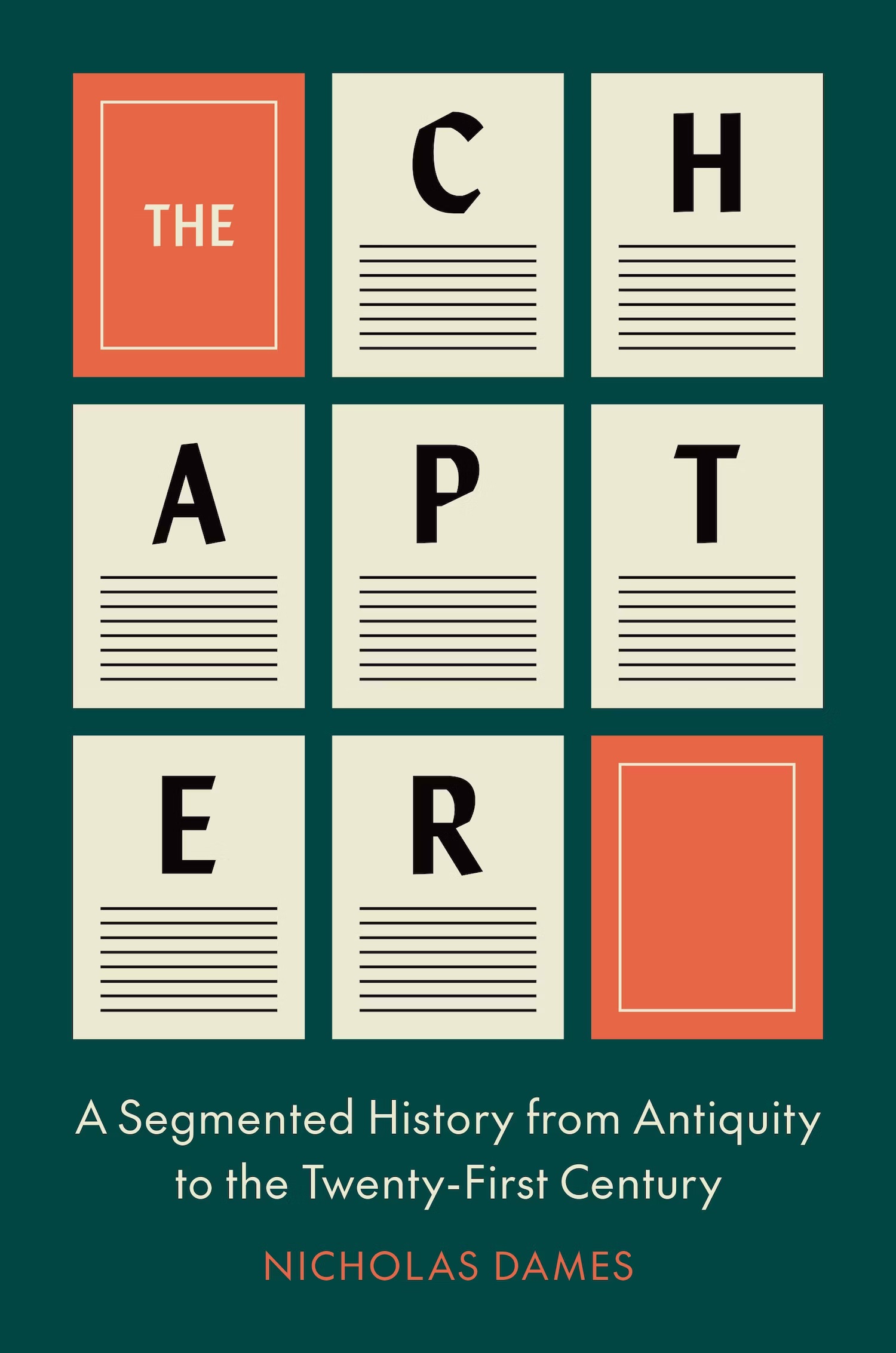 Book you're an evangelist for:
Book you're an evangelist for:
Of late, it's been Jon McGregor's Reservoir 13, so much so that I had to squeeze it into my own book. The story of a young girl's disappearance from a small English village, it's a meditation on the many different orders and rhythms of time we find ourselves stretched between. It's a one-of-a-kind hybrid of the traditionalist and the experimental.
Book you've bought for the cover:
Every single one of the Fitzcarraldo Editions books I own, in their distinctive and uniform blue. They're one of the many pleasures of book shopping in the U.K. (although you can find some of them, occasionally, in the U.S.). Elegantly unadorned, standardized covers reflect a literary culture I want to live in. I admire the designer's art. But, really, I love nothing more than an austere restriction to the title and the author's name: take the French publisher Gallimard's famous Collection Blanche, for instance, or, in Germany, the little yellow volumes of Reclam's Universal Library series. Most contemporary fiction covers these days irritate me.
Book you hid from your parents:
Those copies of Raymond Chandler's Los Angeles noir mysteries--Farewell, My Lovely, say, or The Long Goodbye--that I was told I was too young for, but took down from the shelves anyway. Streetwise, city-poisoned adults seducing, betraying, and occasionally murdering each other: What else could a kid want?
Book that changed your life:
Gustave Flaubert's Madame Bovary. It was my first experience with the power of form in fiction. I remember pacing up and down my room in excitement over it. This, I thought, might be worth studying.
Favorite line from a book:
The final sentence of Henry James's The Wings of the Dove: "We shall never be again as we were!" In its immediate context, said by a clever and unscrupulous woman to her former lover, it's ambiguous, almost imponderable. But in a broader sense it's also remorselessly clear. It could be the last line to every novel, ever.
Five books you'll never part with:
Homer's Odyssey, a constant template for me. Jane Austen's Persuasion, another template. Evelyn Waugh's Decline and Fall, which never fails to cheer and console. Henry James's The Portrait of a Lady, still for me the paradigm of What A Novel Is. C.L.R. James's Beyond a Boundary, the greatest of books on sports and one of the greatest on acculturation, parts of which I've memorized through years of rereading.
Book you most want to read again for the first time:
Proust's In Search of Lost Time: I've a yearning, itself deeply Proustian, to recapture the experience of first reading it, at 20 years old, much of that marathon reading spent in a dorm single with the landline phone unplugged so nothing could interrupt me. Whenever I think of what theorists of reading call "immersion," that's the experience I summon up.
Your favorite chapter from a novel:
It's a fascinating peculiarity of chapters that one rarely remembers them as such! But I might as well go with the opinion of the Master--Henry James himself, who pointed it out in his preface to the novel: chapter 42 of The Portrait of a Lady, in which nothing (outwardly) happens. Read it and see.
Book Candy
Book Candy
"From SZA to the Stone of Scone, the words that help tell the story of 2023 were often mispronounced," the Associated Press reported.
---
"Bridget Jones, Santaland Diaries and A Christmas Carol: 25 literary treats to read this December," courtesy of the Guardian.
---
Gaudy, for example. Merriam-Webster looked up "11 words for festive gatherings."
Rediscover
Rediscover: Michael Bishop
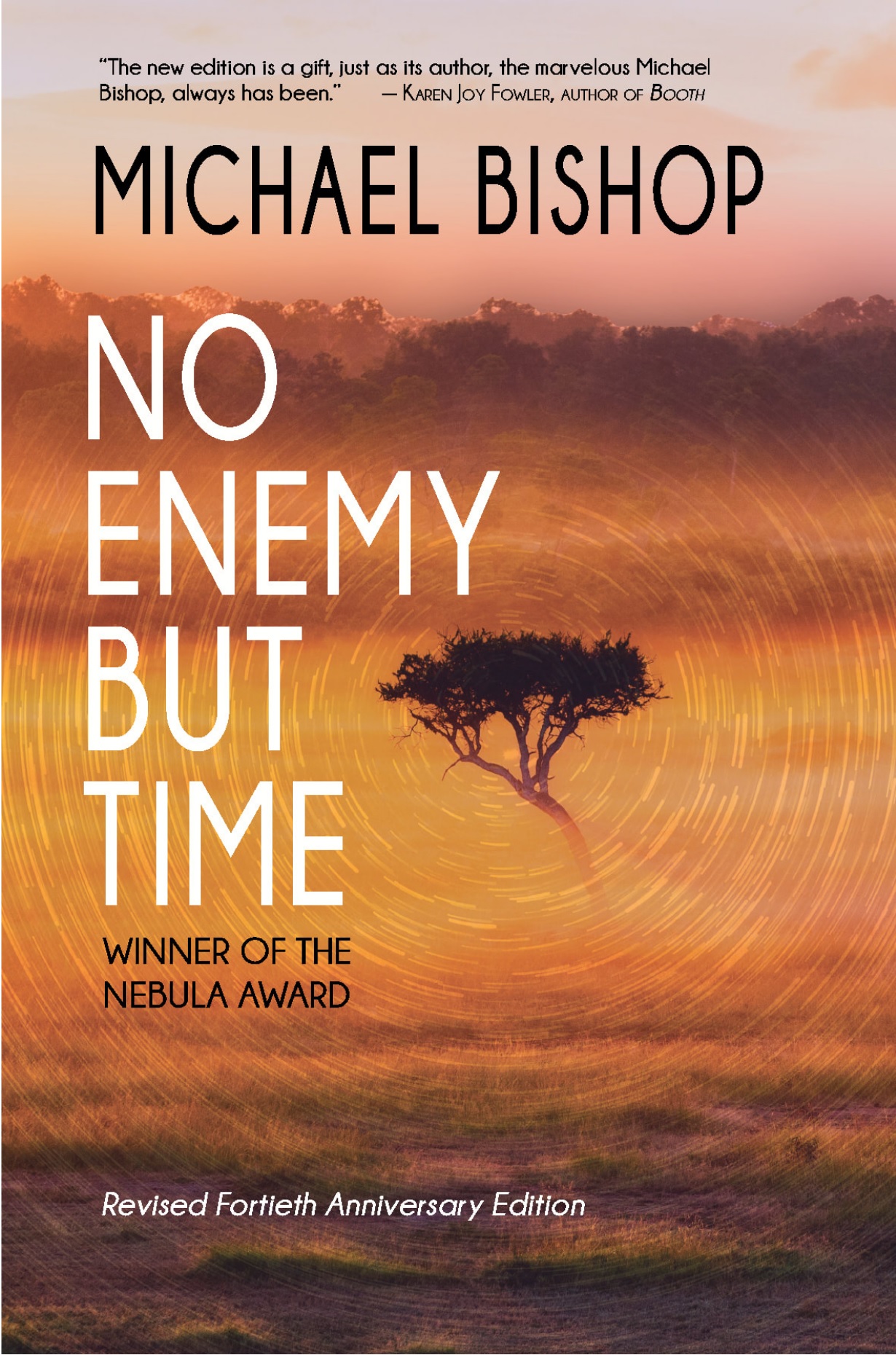 Michael Bishop, who "wrote many stories that inhabit the borderlands between science fiction and mainstream, drawing on influences as diverse as Ray Bradbury and Jorge Luis Borges, Thomas M. Disch and Philip K Dick, Dylan Thomas and Tolstoy, but also reaching back as far as the Greek historian Herodotus for inspiration," died on November 13 at age 78, the Guardian reported.
Michael Bishop, who "wrote many stories that inhabit the borderlands between science fiction and mainstream, drawing on influences as diverse as Ray Bradbury and Jorge Luis Borges, Thomas M. Disch and Philip K Dick, Dylan Thomas and Tolstoy, but also reaching back as far as the Greek historian Herodotus for inspiration," died on November 13 at age 78, the Guardian reported.
"The common element in his work was a desire to explore the human spirit," the Guardian noted, citing early examples "set in vivid alien and alienating faraway worlds," like his debut novel, A Funeral for the Eyes of Fire (1975, revised as Eyes of Fire, 1980), and In Transfigurations (1979).
Bishop introduced the Urban Nucleus of Atlanta, a domed city that represented an alternate, isolated U.S., and chronicled its century-long history through A Little Knowledge (1977) and Catacomb Years (1979), the two books revised and combined in The City and the Cygnets (2019).
His novelette The Quickening (1981) won a Nebula Award, and he received a second for the novel No Enemy but Time (1982). Other works include Ancient of Days (1985); Who Made Stevie Crye? (1984); Unicorn Mountain (1988); Count Geiger's Blues (1992); and Joel-Brock the Brave and the Valorous Smalls (2016). He collaborated with the British science fiction writer Ian Watson on the novel Under Heaven's Bridge (1981), and with Paul Di Filippo for two crime novels, Would It Kill You to Smile? (1998) and Muskrat Courage (2000), under the name Philip Lawson. He also published two volumes of poetry, an essay collection, and two story collections.
Bishop's own favorite from among his novels was Brittle Innings (1994), "a homage to both Mary Shelley and baseball in which a promising young player joins a Georgia team and meets their star, the statuesque and grotesque Jumbo Henry Clerval, an enigma revealed to be the immortal creation of Dr. Frankenstein," the Guardian wrote.
Another homage was Philip K. Dick Is Dead, Alas, originally published as The Secret Ascension (1987) but later reprinted under Bishop's preferred title, in which Dick's sci-fi novels are suppressed by President Nixon.
The Guardian noted that as the Star Wars films, beginning in 1977, "gave a juvenile form of science-fiction ascendancy, Bishop turned from off-world settings to paleoanthropological topics," telling Nick Gevers for the InfinityPlus website in 2000: "Rightly or wrongly, I wanted to reclaim [science fiction], at least in some of its literary manifestations, as a legitimate medium in which to examine age-old human concerns." Bishop's books are available from Fairwood Press.


